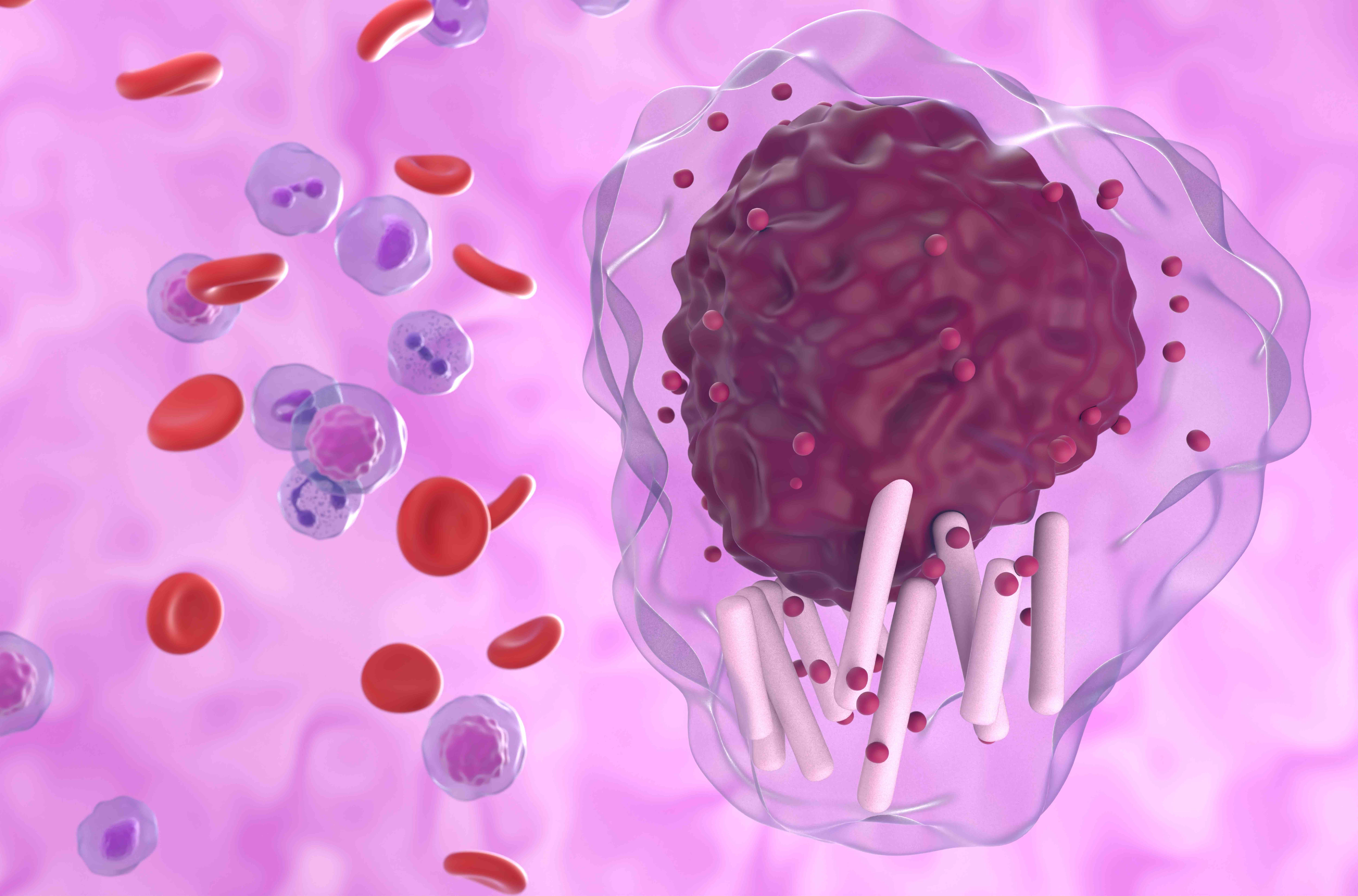- Center on Health Equity & Access
- Clinical
- Health Care Cost
- Health Care Delivery
- Insurance
- Policy
- Technology
- Value-Based Care
Risk of Richter Transformation in CLL May Be Lower in Novel Agent Era
An abstract presented at the 2023 American Society of Hematology Annual Meeting and Exposition suggests that patients with chronic lymphocytic leukemia (CLL) treated in the era of novel agents might be less likely to experience Richter transformation compared with those treated prior to this era.
The modern era of treatments for chronic lymphocytic leukemia (CLL)/small lymphocytic lymphoma (SLL) has seen novel agents and drug combinations that may improve outcomes for patients with these cancers. An abstract presented at the 2023 American Society of Hematology Annual Meeting and Exposition suggests that patients with CLL/SLL treated in the era of novel agents might be less likely to experience Richter transformation (RT) compared with those treated prior to this era.1
RT is characterized by a change in disease histopathology from CLL or SLL to aggressive lymphoma, most frequently to diffuse large B-cell lymphoma (DLBCL). When RT occurs, survival outcomes are generally poor, even with the use of chemoimmunotherapy. And despite recent progress in treatment, outcomes among patients who experience RT remain far worse than those seen in patients with de novo DLBCL treated with chemoimmunotherapy.2
Chronic lymphocytic leukemia in blood | Image credit: LASZLO - stock.adobe.com

The new study aimed to determine whether the incidences of RT in newly diagnosed CLL and treated CLL differ in the era of novel therapies (defined as the time following the FDA approval of ibrutinib for CLL in February 2014) compared with past treatments.1 A total of 3347 patients in the Mayo Clinic CLL Database who were diagnosed with CLL/SLL between January 2000 and April 2023 and seen within 12 months of diagnosis were included in the study, and 82 patients were diagnosed with RT.
Median follow-up time in the cohort overall was 5.6 years, with median follow-ups of 9.5 years and 3.2 years in the pre–novel agent and post–novel agent cohorts, respectively. Baseline patient characteristics at the time of CLL and RT diagnoses were similar among patients diagnosed prior to the novel agent era (n = 69) and during the novel agent era (n = 13).
In the overall cohort, the cumulative incidence rates for RT at 1, 5, and 10 years from CLL/SLL diagnosis were 0.6% (95% CI, 0.4-0.9%), 1.8% (95% CI, 1.3-2.3%), and 3.0% (95% CI, 2.4-3.8%), respectively. The 1-, 5-, and 10-year incidence rates for RT were 0.3% (95% CI, 0.1-0.8%), 3.3% (95% CI, 2.4-4.5%), and 4.9% (95% CI, 3.7-6.5%) among the 1382 patients who received therapy for CLL/SLL in the study period.
In the pre–novel agent era, 1981 patients were diagnosed with CLL/CLL, and the 1- and 5-year incidence rates of RT were 0.6% (95% CI, 0.4-1.1%) and 2.1% (95% CI, 1.5-2.8%), respectively. Those who were treated for CLL/SLL in the pre–novel agent era (n=926) had a 1-year RT incidence rate of 0.3% (95% CI, 0.1-1.0%).
In the novel agent era, 1366 patients diagnosed with CLL/SLL had 1- and 5-year RT incidence rates of 0.5% (95% CI, 0.2-1.1%) and 1.1% (95% CI: 0.6-2.2%), respectively. Those who received treatment during this era (n = 456) had a 1-year RT incidence rate of 0.2% (95% CI, 0.0-1.8%).
Incidence of RT from time of diagnosis not statistically significantly different in the pre–novel agent and novel agent cohorts (HR, 1.6; 95% CI, 0.9-3.0, P = 0.13). And while there was a higher risk of RT after treatment for CLL/SLL prior to the novel agent era, the difference was not statistically significant (HR, 2.4; 95% CI, 0.9-6.1; P = 0.07).
While the study is limited by the length of follow-up, the study authors noted that these findings challenge the idea that the incidence of RT will rise as patients with CLL experience longer survival in the novel treatment era.
“Patients who received CLL/SLL-directed treatment appear to have a lower risk of RT in the novel agent era,” the authors concluded. “This may be driven by the fact that none of the patients who developed RT in the novel agent era received chemoimmunotherapy. Whether novel agent use for CLL/SLL suppresses the development of RT or avoids the risk associated with cytotoxic chemotherapy-induced clonal evolution requires further study.”
Reference
1. Hampel PJ, Rabe KG, Wang W, et al. Incidence of Richter transformation in patients with chronic lymphocytic leukemia (CLL) /small lymphocytic lymphoma (SLL): a cohort study evaluating different therapeutic eras. Presented at: 65th American Society of Hematology Annual Meeting and Exposition; December 9-12, 2023; San Diego, CA. Abstract 3271. https://ash.confex.com/ash/2023/webprogram/Paper185076.html
2. Ryan CE, Davids MS. Practical management of Richter transformation in 2023 and beyond. Am Soc Clin Oncol Educ Book. 2023;43:e390804. doi:10.1200/EDBK_390804
